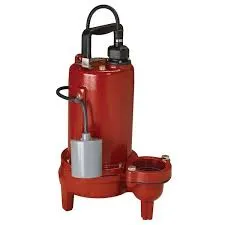English
- Afrikaans
- Albanian
- Amharic
- Arabic
- Armenian
- Azerbaijani
- Basque
- Belarusian
- Bengali
- Bosnian
- Bulgarian
- Catalan
- Cebuano
- Corsican
- Croatian
- Czech
- Danish
- Dutch
- English
- Esperanto
- Estonian
- Finnish
- French
- Frisian
- Galician
- Georgian
- German
- Greek
- Gujarati
- Haitian Creole
- hausa
- hawaiian
- Hebrew
- Hindi
- Miao
- Hungarian
- Icelandic
- igbo
- Indonesian
- irish
- Italian
- Japanese
- Javanese
- Kannada
- kazakh
- Khmer
- Rwandese
- Korean
- Kurdish
- Kyrgyz
- Lao
- Latin
- Latvian
- Lithuanian
- Luxembourgish
- Macedonian
- Malgashi
- Malay
- Malayalam
- Maltese
- Maori
- Marathi
- Mongolian
- Myanmar
- Nepali
- Norwegian
- Norwegian
- Occitan
- Pashto
- Persian
- Polish
- Portuguese
- Punjabi
- Romanian
- Russian
- Samoan
- Scottish Gaelic
- Serbian
- Sesotho
- Shona
- Sindhi
- Sinhala
- Slovak
- Slovenian
- Somali
- Spanish
- Sundanese
- Swahili
- Swedish
- Tagalog
- Tajik
- Tamil
- Tatar
- Telugu
- Thai
- Turkish
- Turkmen
- Ukrainian
- Urdu
- Uighur
- Uzbek
- Vietnamese
- Welsh
- Bantu
- Yiddish
- Yoruba
- Zulu
Telephone: +86 13120555503
Email: frank@cypump.com
Aug . 13, 2024 02:42 Back to list
Essential Guide to Selecting and Installing Basement Plumbing Pumps for Optimal Performance and Efficiency
Understanding Basement Plumbing Pumps A Homeowner's Guide
Homeowners often face the daunting task of maintaining a dry and functional basement, especially in regions prone to heavy rainfall or flooding. One essential tool in this home management arsenal is the basement plumbing pump. Understanding how these pumps work, their types, and their maintenance can help homeowners safeguard their properties from water damage.
What is a Basement Plumbing Pump?
A basement plumbing pump is a vital device designed to remove excess water that accumulates in the basement, ensuring that the area remains dry and usable. Typically, these pumps are installed in sump pits, which are excavated areas at the lowest point of the basement. When water rises to a certain level in the sump pit, the pump activates to drain the water away from the home’s foundation. This not only protects the basement from flooding but also prevents potential mold growth and structural damage.
Types of Basement Plumbing Pumps
There are primarily two types of basement plumbing pumps sump pumps and sewage pumps.
1. Sump Pumps These are the most common type of basement plumbing pumps used to remove groundwater accumulation. They are usually submersible, meaning they operate while submerged in water, and have a float switch that triggers the pump when the water level rises above a predetermined point. Sump pumps can be either pedestal (above ground) or submersible (in the pit).
2. Sewage Pumps Unlike sump pumps, sewage pumps are designed to handle wastewater and sewage. These pumps are typically used in scenarios where the sewage system requires materials to be pumped uphill, such as in homes with below-ground bathrooms. Sewage pumps are equipped to handle solids and debris, making them crucial for maintaining sanitary conditions when plumbing fixtures are below the main sewage line.
Importance of Basement Plumbing Pumps
Investing in a reliable basement plumbing pump is crucial for every homeowner. Here are several reasons why
basement plumbing pump

- Flood Prevention In areas where heavy rainfall is common, having a basement pump can drastically reduce the risk of flooding. It efficiently removes water, ensuring your basement is dry and usable. - Mold and Mildew Control Water accumulation can lead to mold and mildew growth, which poses health risks and can cause significant structural damage. A basement pump mitigates this risk by keeping moisture levels low.
- Preservation of Property Flooded basements can lead to extensive damage, requiring costly repairs. An effective pump system protects your property value by preventing such damage.
Maintenance Tips
Maintaining your basement plumbing pump is crucial to ensure it operates effectively. Here are a few maintenance tips
- Regular Inspections Check the pump regularly to ensure it is operational. Look for any signs of wear or corrosion, particularly in the electrical components.
- Clean the Sump Pit Remove any debris from the sump pit to ensure that the pump can operate freely without obstruction.
- Test the Pump Periodically test the pump by pouring water into the sump pit to see if the float switch activates and the pump responds.
- Consider a Backup System In areas with frequent power outages, consider installing a battery backup for your pump. This ensures it continues to operate even when the power goes out.
Conclusion
Basement plumbing pumps are integral to maintaining a dry, safe, and welcoming environment in your home. Understanding their functions, types, and maintenance will help you make informed decisions that protect one of your most significant investments. Whether you are facing heavy rains or want to keep your basement in top condition, having a reliable basement pump is a wise choice for any homeowner.
-
ISG Series Vertical Pipeline Pump - Chi Yuan Pumps Co., LTD.|Advanced Hydraulic Design&Energy-Efficient Solutions
NewsJul.30,2025
-
ISG Series Vertical Pipeline Pump - Chi Yuan Pumps Co., LTD.
NewsJul.30,2025
-
ISG Series Vertical Pipeline Pump - Chi Yuan Pumps Co., LTD.|energy-efficient fluid handling&industrial durability
NewsJul.30,2025
-
ISG Series Vertical Pipeline Pump - Chi Yuan Pumps | Advanced Engineering&Industrial Efficiency
NewsJul.30,2025
-
ISG Series Pipeline Pump - Chi Yuan Pumps | High Efficiency, Energy Saving
NewsJul.30,2025
-
ISG Series Vertical Pipeline Pump-Chi Yuan Pumps|High Efficiency&Reliable Performance
NewsJul.29,2025










